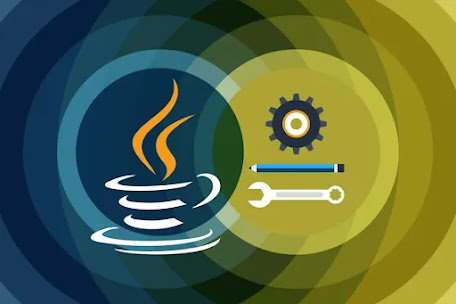JAVA VIRTUAL MACHINE (JVM)
What is the JVM?
Introducing the Java Virtual Machine:
The JVM manages system memory and provides a portable execution environment for Java-based applications. The Java Virtual Machine is a program whose purpose is to execute other programs. It's a simple idea that also stands as one of our greatest examples of coding
What the JVM is used for
The JVM has two primary functions:
to allow Java programs to run on any device or operating system (known as the "Write once, run anywhere" principle), and to manage and optimiz
e program memory.
Having a technical definition for the JVM is useful, and there's also an everyday way that software developers think about it. Let's break those down:
- Technical definition: The JVM is the specification for a software program that executes code and provides the runtime environment for that code.
- Everyday definition: The JVM is how we run our Java programs. We configure the JVM's settings and then rely on it to manage program resources during execution
Who develops and maintains the JVM?
The JVM is widely deployed, heavily used, and maintained by some very bright programmers, both corporate and open source. The OpenJDK project is the offspring of the Sun Microsystems decision to open-source Java. OpenJDK has continued through Oracle's stewardship of Java, with
Memory management in the JVM
The most common interaction with a running JVM is to check the memory usage in the heap and stack. The most common adjustment is tuning the JVM's memory settings.

 The JVM as a virtual machine
The JVM as a virtual machine
The JVM is a virtual machine that runs Java class files in a portable way. Being a virtual machine means the JVM is an abstraction of an underlying, actual machine--such as the server that your program is running on. Regardless of what operating system or hardware is actually present, the JVM creates a predictable environment for programs to run within. Unlike a true virtual machine, however, the JVM doesn't create a virtual operating system. It would be more accurate to describe the JVM as a managed runtime environment, or a process virtual machine.
We've talked about the JVM's role in running Java applications, but how does it perform its function? In order to run Java applications, the JVM depends on the Java class loader and a Java execution engine.
The Java class loader in the JVM
Everything in Java is a class, and all Java applications are built from classes. An application could consist of one class or thousands. In order to run a Java application, a JVM must load compiled .class files into a context, such as a server, where they can be accessed. A JVM depends on its class loader to perform this function.
The Java class loader is the part of the JVM that loads classes into memory and makes them available for execution. Class loaders use techniques like lazy-loading and caching to make class loading as efficient as it can be.
Every Java Virtual Machine includes a class loader. The JVM spec describes standard methods for querying and manipulating the class loader at runtime, but JVM implementations are responsible for fulfilling these capabilities.
The execution engine in the JVM
Once the class loader has done its work of loading classes, the JVM begins executing the code in each class. The execution engine is the JVM component that handles this function. The execution engine is essential to the running JVM. In fact, for all practical purposes, it is the JVM instance.
Executing code involves managing access to system resources. The JVM execution engine stands between the running program--with its demands for file, network and memory resources--and the operating system, which supplies those resources.
How the execution engine manages system resources
System resources can be divided into two broad categories: memory and everything else.

We could say that James Gosling and Brendan Eich invented modern programming, but thousands of others have refined and built on their ideas over the following decades. Whereas the Java Virtual Machine was originally just for Java, today it has evolved to support many scripting and programming languages, including Scala, Groovy, and Kotlin. Looking forward, it's hard to see a future where the JVM isn't a prominent part of the development landscape.

Comments
Post a Comment